Here’s a free guide to help you get started with social media marketing. We’ve put together some of our best tips and strategies for getting your business off the ground and growing it into something amazing!
Social media marketing is a powerful way to get your brand in front of your target audience, but it can be difficult to know where to start.
Thankfully, there are plenty of resources out there to help you navigate the social media landscape. One such resource is 2021 HubSpot Blog Research, which found that marketers’ top goals for social media are advertising their products/services and increasing their brand awareness.
However, many brands struggle to create compelling content and reach their target audience. Social media plays a very important role at the top of the goal-achieving process, so it actually creates everything about social media marketing: what it is, its benefits, and a social media marketing strategy that is useful to your business. Let’s take a closer look at how to do it. Here are some of the social media statistics:
Social Media Marketing ToC
What is social media marketing?
Social media marketing is the process of creating content for social media platforms, promoting products and services, building communities with target audiences, and driving traffic to your business.
Social media is more than just a place for people to share lunch photos and yell at politics. It’s an important part of how people interact with brands, businesses, and each other. And if you want to succeed in the digital world, you need to take advantage of all the benefits of these platforms.
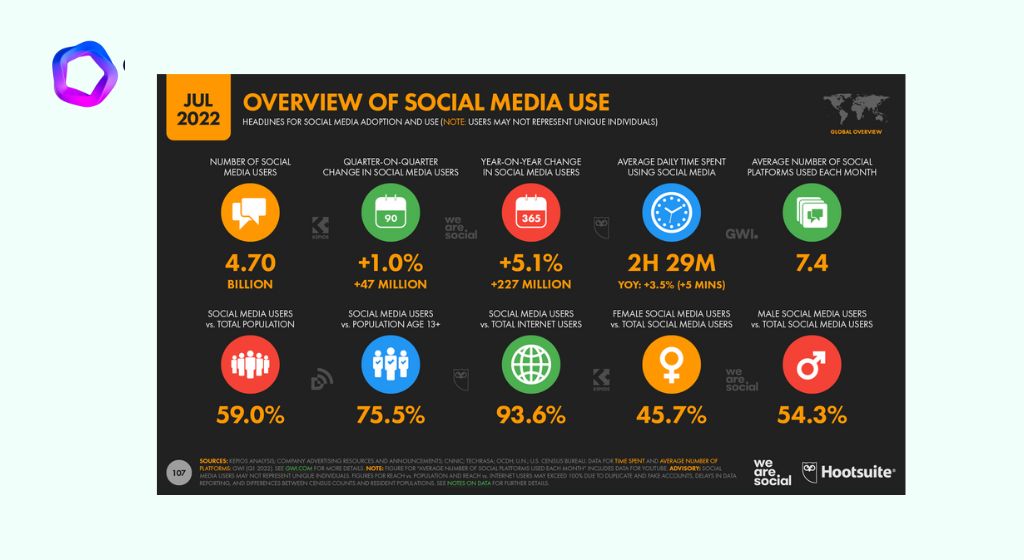
It’s about knowing where your audience and customers are, and how they interact socially with each other and with your brand. Social media marketing is constantly evolving as new features and platforms emerge every day. However, there are some basics to get you started.
– Social media marketing is about knowing where your audience and your customers are, how they interact with each other, and how they interact with your brand socially. While social media marketing is very valuable overall and beneficial to your business growth (discussed in the next section), your strategy depends on which social network your target audience spends their time on.
Make sure you segment your audience before jumping into social media marketing. The platform segmentation helps you get the most out of every post or campaign you create.
Have you ever wondered what the best social media marketing tools are? We have a list of over 100 tools, so you’ll be sure to find something that works for you.
Don’t forget to check it out!
Social Media Marketing Platforms
Facebook is one of the most popular social media platforms in the world. Since its launch in 2004, it has become an invaluable tool for the B2C business, offering advanced promotional tools and organic opportunities.
With 1.9 billion daily active users worldwide, Generation X and Millennials are evenly distributed on Facebook. These two groups are most likely to belong to your target audience. It also offers a variety of targeting options so you can reach the exact person you want to reach and avoid wasting money on those who aren’t interested in what you’re offering.
Facebook is a great place to start advertising if you’re just starting out in business or want to increase your brand awareness. The platform offers a variety of ways to listen to messages without spending money, from sponsored posts and videos to boosted posts and ads. So you can try as many approaches as you can until you find one that suits your needs. Company!
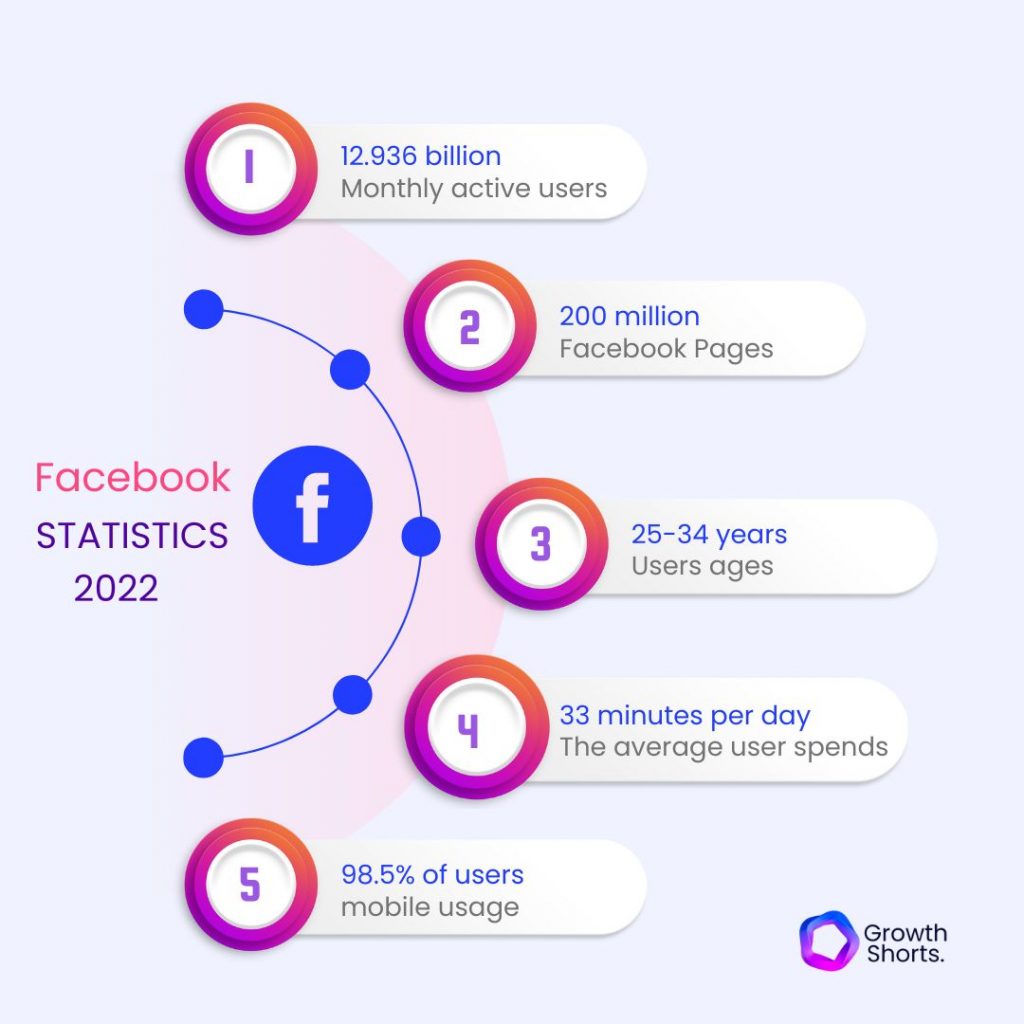
Tips for marketers
Facebook ads examples
Nike
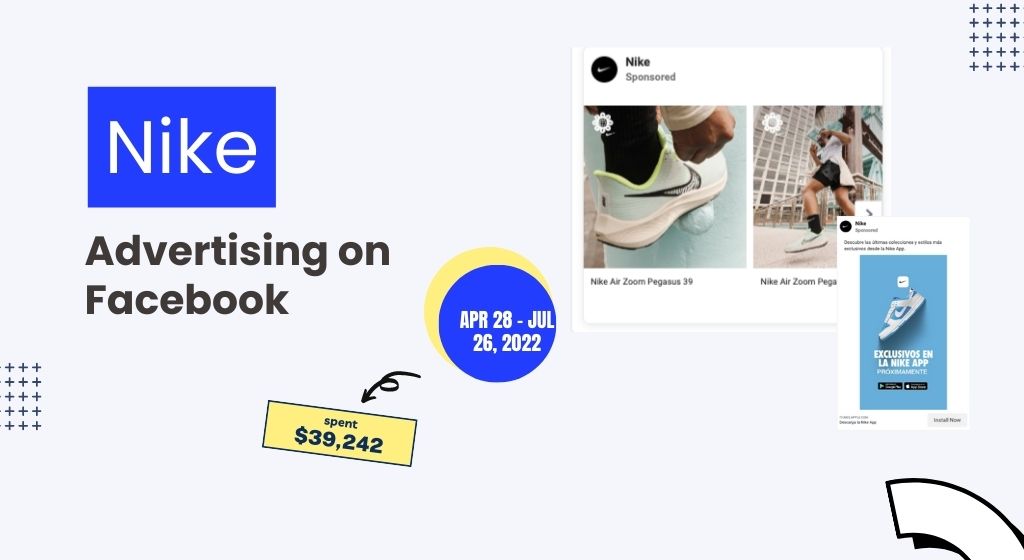
Nike’s social media strategy for Facebook is to offer a variety of content that’s all about being your best self.
They post photos of athletes, quotes from famous athletes, and tips on how to get the most out of your workout. They also share articles on how to stay motivated and healthy, as well as stories about how their products have helped people overcome obstacles in their lives.
Their content is always authentic and engaging, which is why they have more than 4 million fans!
TikTok

If you were to ask us, we’d say that TikTok is a great way to reach out to millennials.
The platform is popular with this demographic, and it’s easy to use. It’s also an excellent way to connect with your audience on a personal level.
In fact, we’ve found that the platform is a great way to market your products and services because it allows users to interact with one another in real time. That means they can respond directly to your company’s ad or post—and that can lead to some pretty amazing results!
Tips for marketers
TikTok ads examples

Adidas executed a brand auction campaign with In-feed Ads as the main emphasis and Video Views as the primary goal. Adidas targeted both male and female sports-interested consumers between the ages of 18 and 34.
In order to highlight the brand’s collaboration with Candace Parker and the Impossible Brand Campaign, the campaign generated over 57 million impressions. More significantly, Adidas made sure that its advertisements appeared alongside content that was appropriate for its brand on TikTok by achieving a 99.9% Brand Safety and 99.9% Brand Suitability score.
Source: Tiktok case study
Starbucks
Starbucks is the greatest coffee brand on the planet. With over 50,000 stores across the globe and 10.1% share of the US coffee grounds, it’s hard to argue otherwise.
But how did they get to this point? Well, it took a lot of effort. And some good old-fashioned intuition.
With more than 11 million followers on Twitter, Starbucks has been totally spot-on showcasing their followers every now and then by retweeting and interacting with them. They clearly understand the importance of Twitter engagement—and that’s what makes them great!
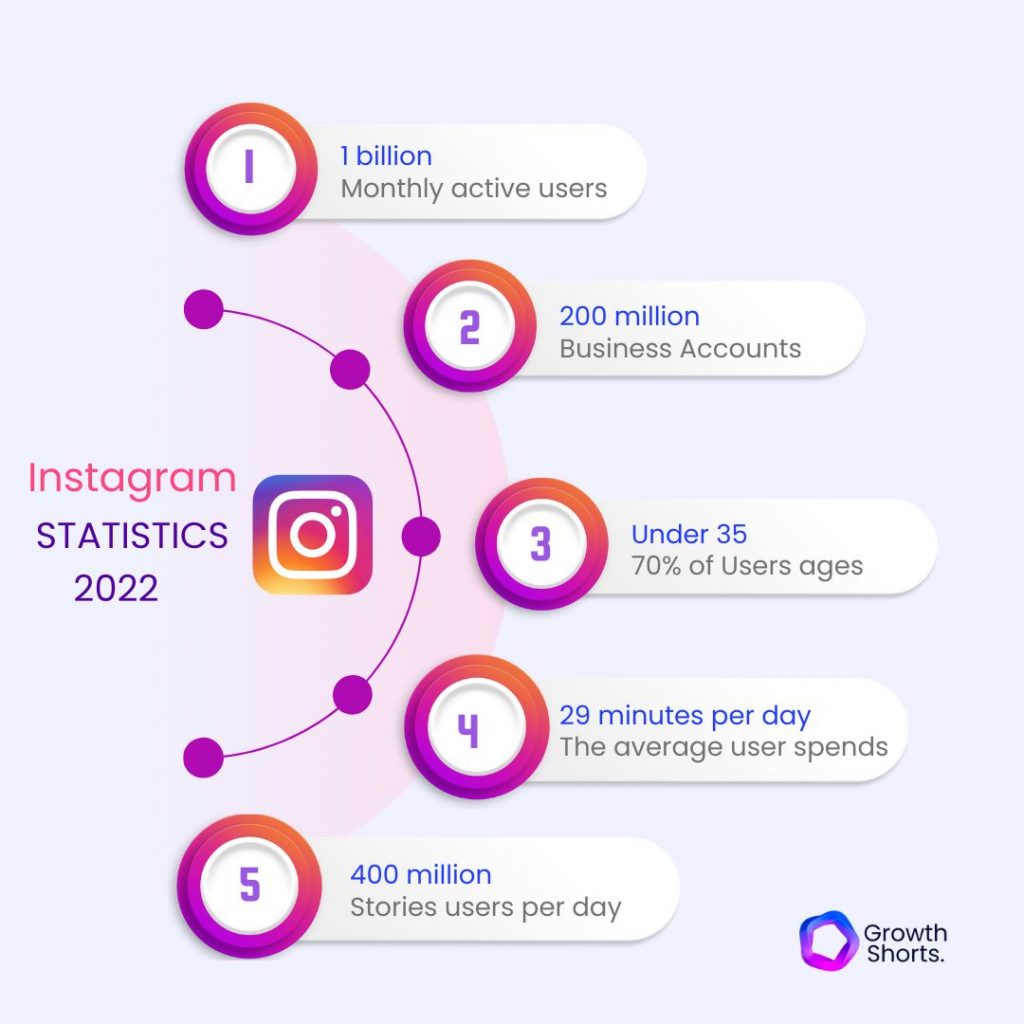
Instagram is a social media platform that has taken the world by storm. With over 1 billion monthly active users, Instagram is one of the most popular platforms in the world. The platform relies heavily on visual content and user-generated content. It’s also an excellent place for brands to advertise.
Instagram was founded just 12 years ago, but its popularity is undeniable. The platform has been able to build a strong community of users who are passionate about sharing their own photos and videos with others around the world.
The advanced e-commerce tools on Instagram make it easy for users to find products from their favorite brands, browse through them at their leisure, and complete purchases without ever leaving the app!
This makes Instagram a difficult platform to beat when it comes to leading the industry in visual appeal and user engagement!
Tips for marketers
Instagram ads examples
Sephora
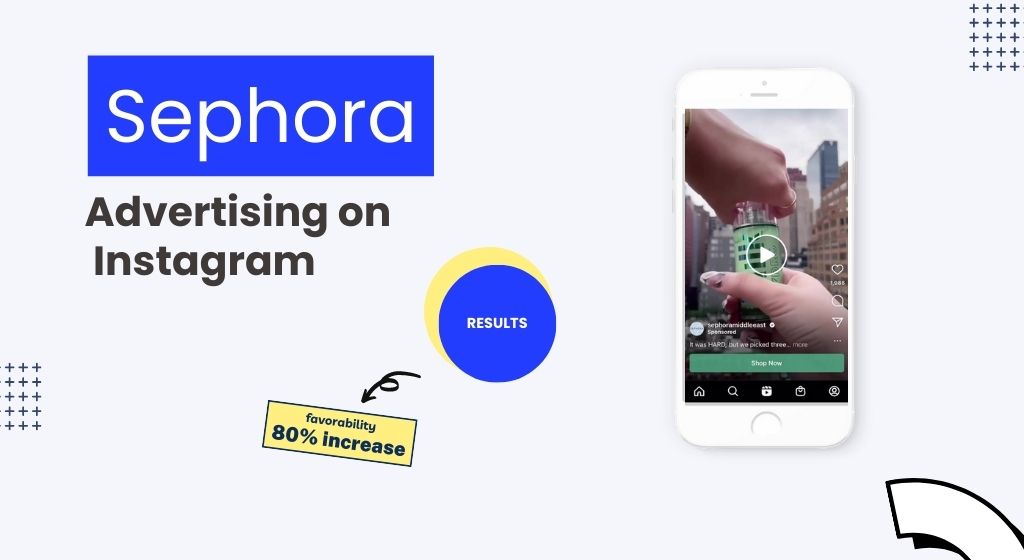
Working with the international cosmetics company Milk Makeup, Sephora aimed to increase the engagement of its key audience—women interested in cosmetics and skin care—on Instagram. Additionally, it aimed to engage Gen Z. (ages 18–24).
The marketing and brand lift research, which lasted from August 9 to July 31, 2021, measured:
Reels advertisements enhance favorability by 80% as compared to video campaigns that are run as usual.
Reels advertisements have a 65 percent reduced cost in favorability lift as compared to video campaigns run as normal. Source: Facebook
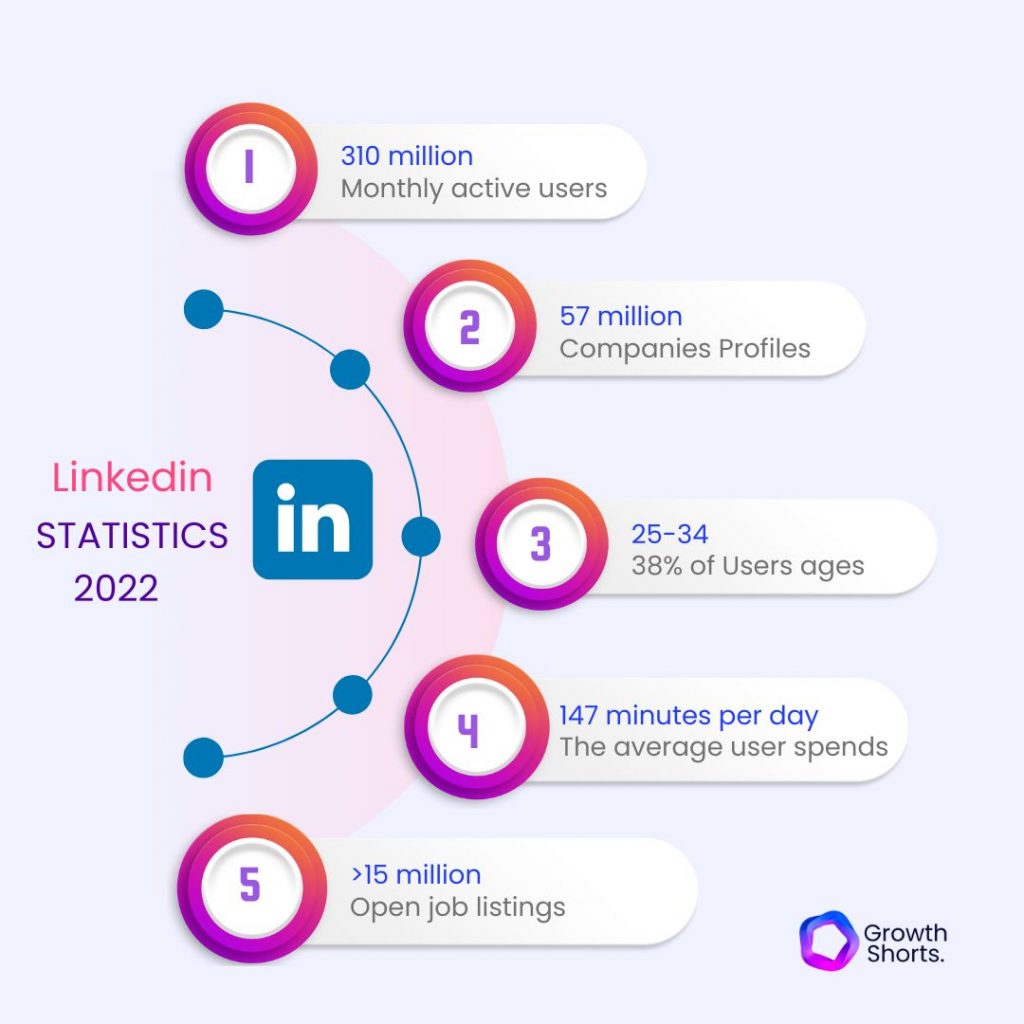
LinkedIn is a professional Facebook cousin. It’s a platform for B2B relations, business development, and social selling—and you’ll find it in every industry under the sun.
It has 774 million active users worldwide, which means there are plenty of opportunities to reach out to potential clients and partners on LinkedIn. The key is to make sure your profile is optimized so that you can connect with them in a meaningful way.
LinkedIn is an ideal platform for B2B companies looking to identify key decision makers and build industry-specific communities.
Tips for marketers
LinkedIn ads examples
Grammarly

Grammarly is a popular online grammar checker that helps users write with confidence. They use their software to help people improve their writing skills, allowing them to communicate clearly and effectively.
Grammarly uses a single image ad on LinkedIn to promote their product. The image shows a woman looking at her phone with a smile on her face, and the headline reads “Check your text in seconds—no more typos!” This simple but effective ad invites users to find out more about Grammarly’s product.
The lead gen form attached to their simple but effective single image ad allows Grammarly to gain new leads, providing valuable information about their target audience and helping them promote themselves as a leading company in their field.
YouTube
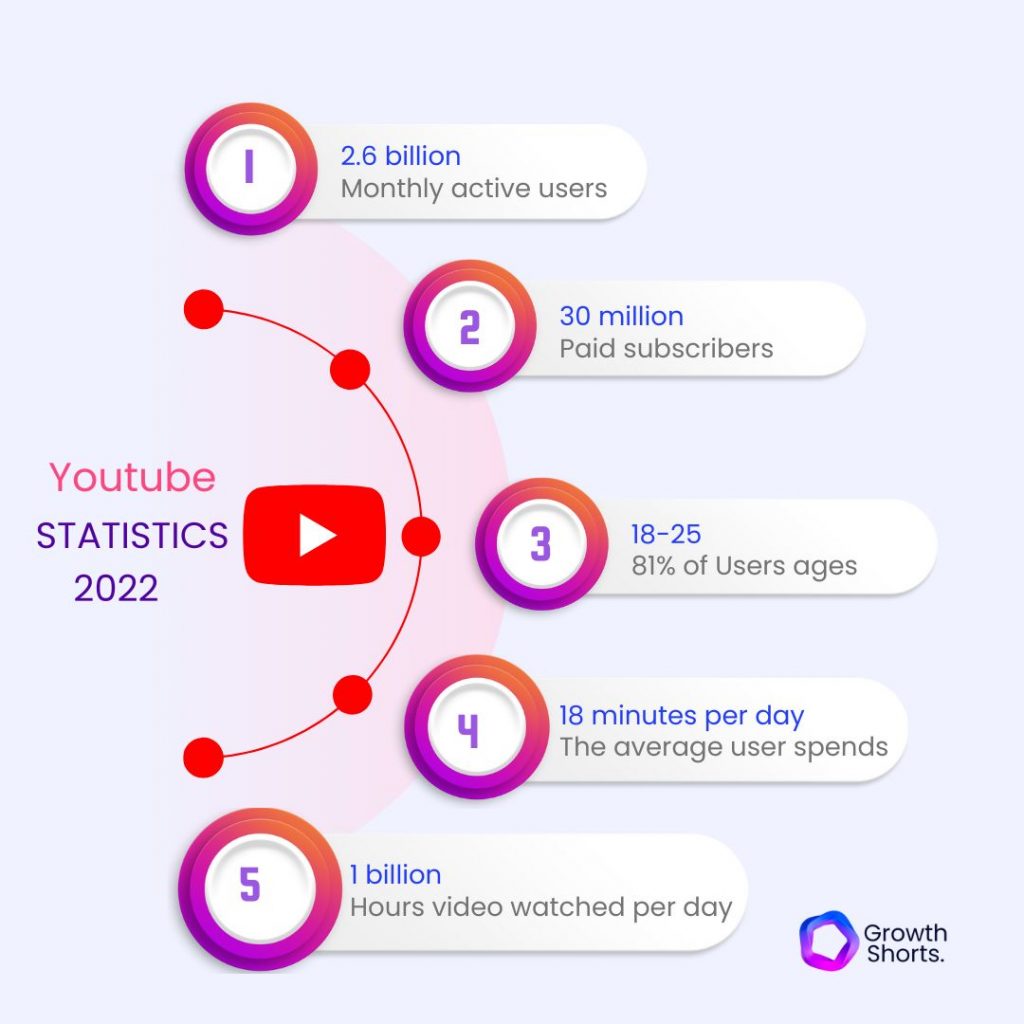
YouTube is the second most visited website in the world, and it’s also our favorite platform for building a community.
Tips for marketers
Youtube ads examples
Red Bull
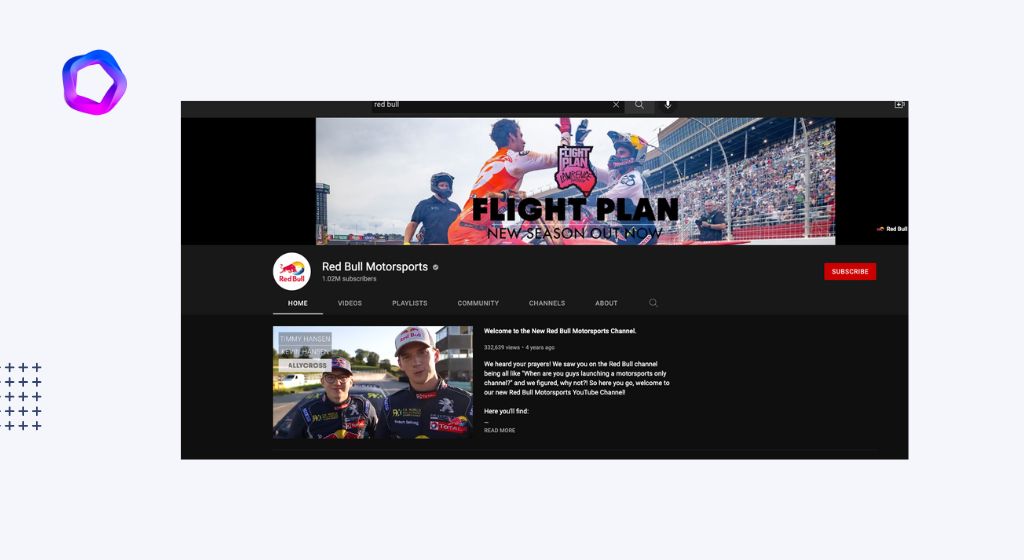
Red Bull has reached a billion total video views in just 6 years. The YouTube channel is full of athletes, daredevils, and other risk takers doing awesome things: climbing frozen Niagara Falls, building a wooden bike from scratch, and driving a race car on ice.
The videos are clearly designed to promote an active lifestyle that is full of energy. That’s what Red Bull is all about—building up your energy so you can do more amazing things in your life!
Snapchat
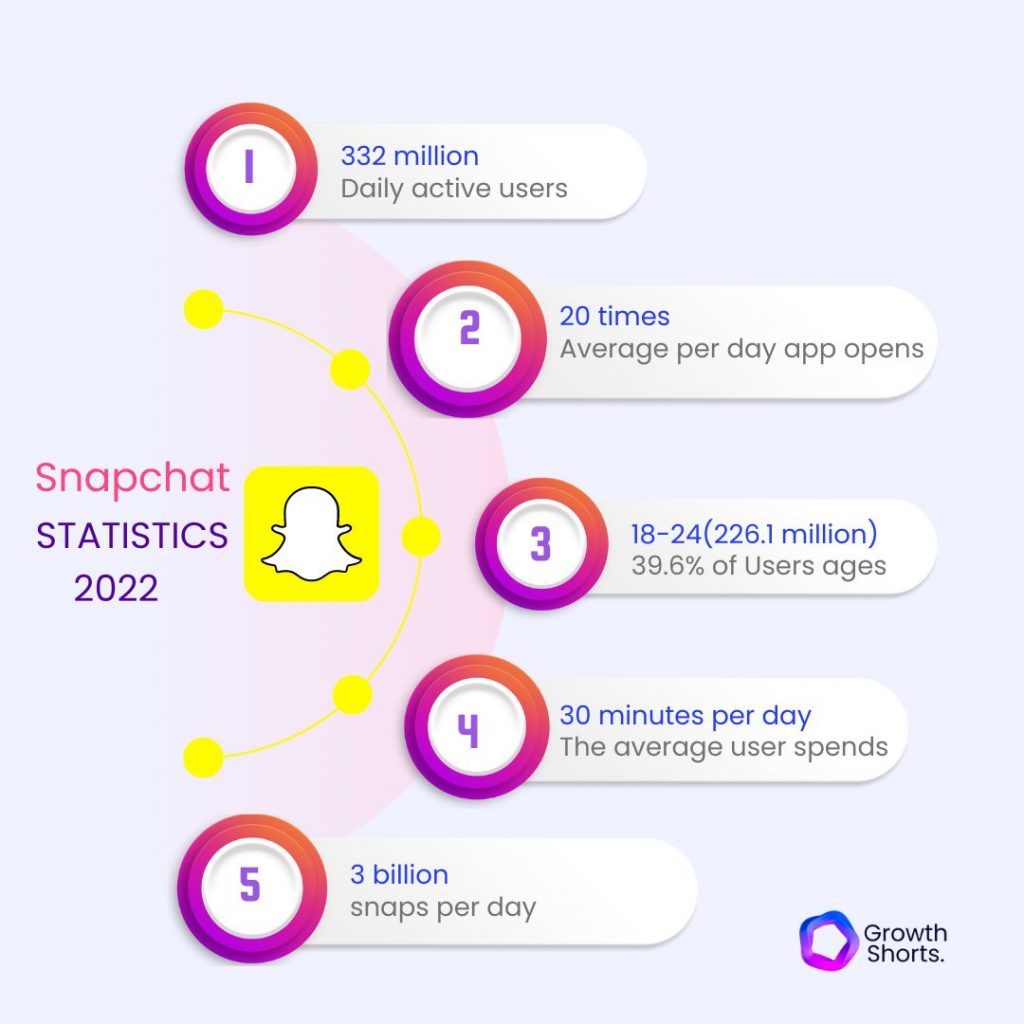
Snapchat, a popular social media app that was first launched in 2011, has been a force in the industry since its inception. The platform is used by 306 million people on a daily basis worldwide and primarily appeals to Generation Z.
The platform is best known for its ephemeral content—the ability to share photos or videos with your friends that will expire after 24 hours. This feature separates it from other social media platforms like Facebook and Instagram, which have always been focused on permanent content.
Snapchat first gained popularity in 2015 when it introduced Snapcash and Discover, two features that let you send money to friends and discover new content from publishers like BuzzFeed and Vice. Since then, Snapchat has continued to be popular among young adults who appreciate the privacy features and ability to create their own content without having it live forever online.
Tips for marketers
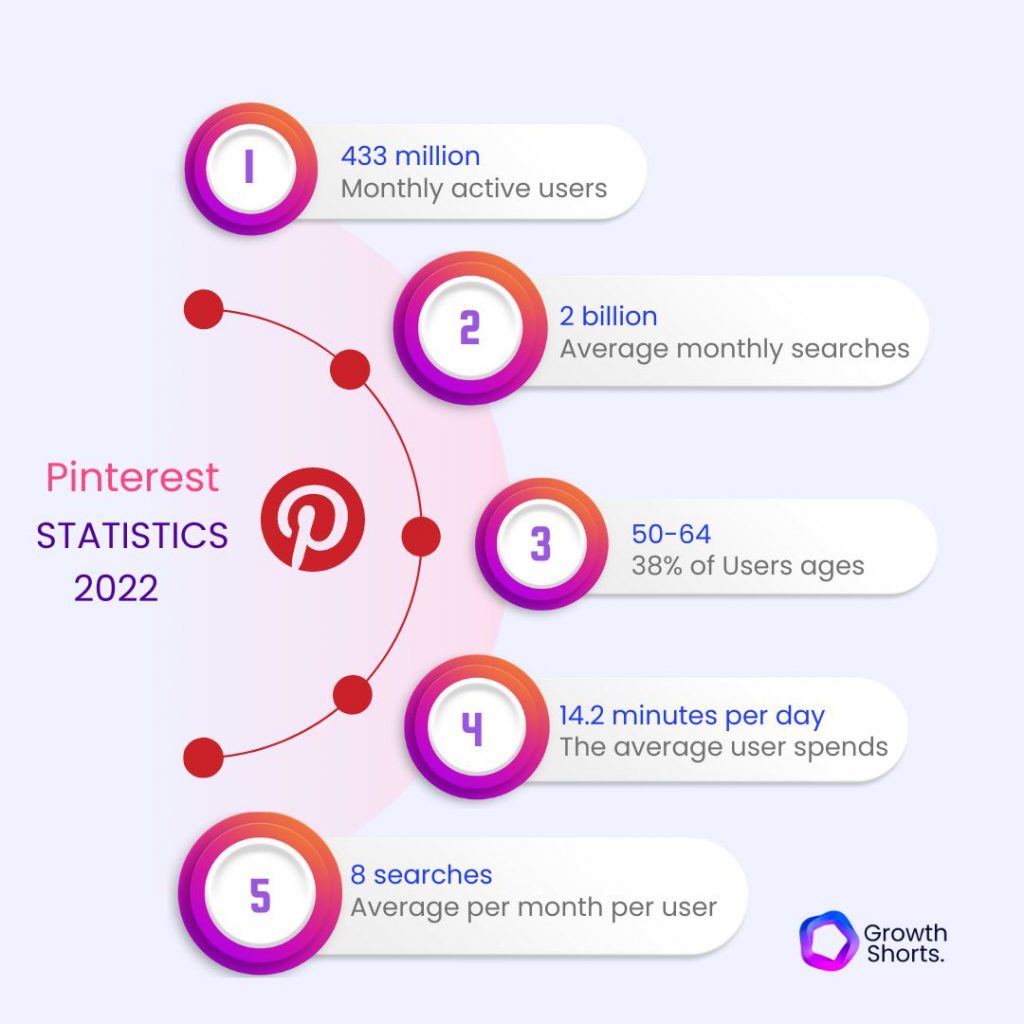
When you think of Pinterest, what do you see?
For many people, the answer is probably a collage of images—some of them inspirational, others quirky and funny. But that’s only half the story. To really understand what Pinterest is all about, it’s important to know that they have over 444 million monthly active users worldwide.
That means that there are millions of people who visit the site every single day to discover new products, get inspired by their favorite brands and artists, or even find a new hobby to try out. And they’re not just Millennials: Gen Zers (ages 13-18) make up 25% of their audience, while Gen Xers (ages 38-53) and Baby Boomers (ages 54+) make up another 25%.
So how does a platform like this work? In short: Pinterest is an online pinboard where users can “pin” images from around the web onto one virtual board. Users can search through these images by keyword or topic to find inspiration for anything from fashion to home decor—or even just something fun for dinner tonight! 85% of Pinners say Pinterest is where they go when they want help starting a new project or learning more about something.
Building your social media marketing strategy
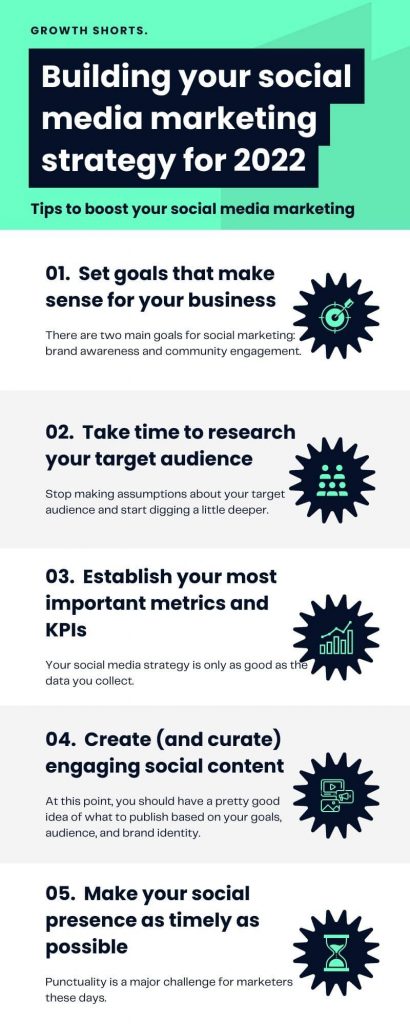
It’s 2022, and we’re looking at a landscape with more competition and content than ever.
That’s why it’s more important than ever to have a clear social media marketing strategy.
Good news: now’s the perfect time to make it happen!
No matter what your goals are for 2022, you’ve got to be able to say “no” to efforts that don’t serve your goals. That’s why we put together a comprehensive guide to creating a social media marketing plan from scratch. Whether you’re totally new to social or want to double-check your priorities in 2022, this guide has you covered.
Set goals that make sense for your business Take time to research your target audience Establish your most important metrics and KPIs Create (and curate) engaging social content Make your social presence as timely as possible Assess what’s working, what isn’t, and how to keep improving Bring other departments into the mix.
Set goals that make sense for your business
That’s the first question we ask when we’re getting started with a new client.
There are two main goals for social marketing: brand awareness and community engagement. According to the 2021 Sprout Social Index™, the most common goals for social are increasing brand awareness (58%) and increasing community engagement (41%). Whether you want to build a larger following or a more active community, taking the time to define your social goals is the first step to reaching them.
Once you know what you want out of your social media marketing, it’s time to plan! Your goals will inform how much time and energy you’ll need to dedicate to your campaigns.
Increase brand awareness
This means getting your name out there. To create authentic and lasting brand awareness, avoid solely publishing promotional messages. Instead, focus on content that emphasizes your personality and values first.
Generate leads and sales
Whether online, in-store or directly through your social profiles, followers don’t make purchases by accident. For example, are you about alerting customers about new products and promos? Are you integrating your product catalog into your social profiles? Are you running exclusive deals for followers?
Take time to research your target audience
Stop making assumptions about your target audience and start digging a little deeper.
Only 55% of marketers use social data to better understand their target audience, making it a huge opportunity for both leaders and practitioners. Much of what you need to know about your audience to influence your social media marketing strategy is already available. You just have to know where to look.
With the right tool, marketers can quickly research their audience. No formal market research or data science chops are necessary.
Remember: different platforms attract different audiences.
There are a lot of different social media platforms out there, and they all have their own strengths and weaknesses. The trick is picking the right one for your brand’s needs.
Take today’s social media demographics, for example. These numbers speak directly to which networks your brand should approach and what types of content to publish. Here are some key takeaways for your 2022 social media marketing strategy:
- Facebook and YouTube are both excellent places for ads due to their high-earning user bases.
- The top social networks among Millennials and Gen Z are Instagram and YouTube, signaling the strength of bold, eye-popping content that oozes with personality.
- Women vastly outnumber men on Pinterest, which boasts the highest average order value for social shoppers.
- LinkedIn’s user base is well-educated, making it a hub for in-depth, industry-specific content that might be more niche than what you see on Facebook or Twitter.
- Don’t spread yourself too thin. Instead, focus on networks where your core audience is already active—and make sure you’re posting high-quality content there!
Do your homework on your existing social media audience
Social media is a powerful tool for your business, but it can be hard to know where to focus your efforts and resources.
One way to make sure you’re spending your time on the right network is by using Sprout’s analytics dashboard. It brings audience demographics to the forefront, so you can make data-driven decisions about where to focus your marketing efforts. The dashboard also helps highlight which social networks are doing the most activity and make sure you are spending your time on the right network.
Sprout’s group reports allow you to view Facebook, Twitter, Instagram, LinkedIn, and Pinterest data side-by-side in a customizable format that can be exported by date range and profile.
You don’t need to rely on social media alone to get the data you need to improve your marketing.
There’s plenty of other sources of valuable audience data to supplement your social media insights. This includes your Google and email analytics, your CRM, your customer service platform or even your best-selling products.
All of the above will ultimately influence everything from your marketing messaging to how you’ll approach customer service or social commerce.
Establish your most important metrics and KPIs
Your social media strategy is only as good as the data you collect.
That’s why it’s so important to focus on metrics that align with your goals. The right metrics can help you understand what’s working, where your audience is coming from, and how they interact with your content.
Here are some of the most important metrics to pay attention to:
Create (and curate) engaging social content
If you’re like me, the answer is probably “a lot of content.” And that’s great! But if you manage what you publish, how can you know what to publish?
The answer lies in your content strategy.
At this point, you should have a pretty good idea of what to publish based on your goals, audience, and brand identity. You can also see which networks need to be covered.
Content ideas for social media marketing
Stories and time-sensitive posts
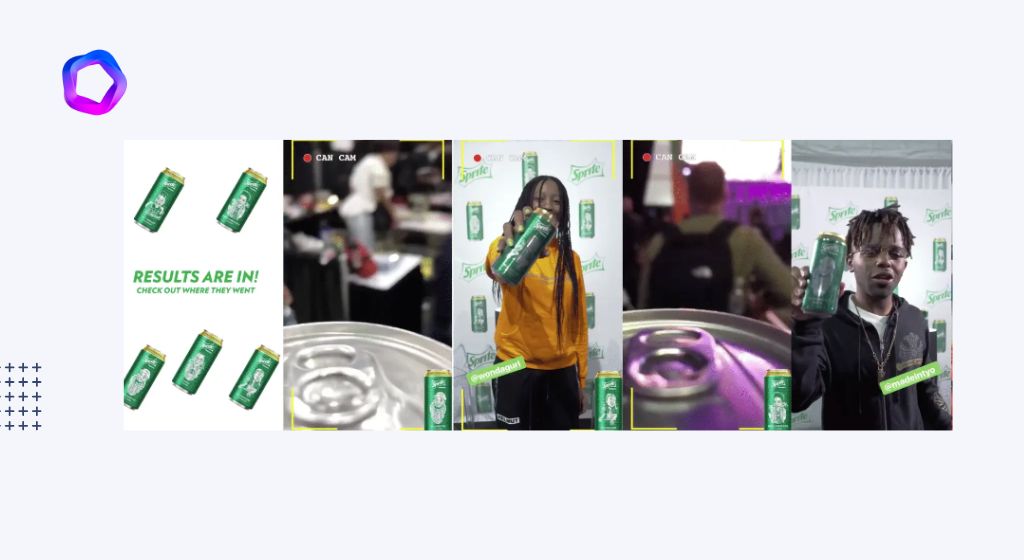
Stories are the most popular way to share your brand’s stories, and there’s no better place than Instagram. By leveraging follower FOMO (FOMO), story-style content becomes interactive and eye-catching. By default, this content appears first in your followers’ feeds to help your brand’s account “skip lines” to keep viewers fresh. The
story is especially valuable for taking followers behind the scenes and making social feeds feel more personal. For example, consider how to use stories to cover an event or take your followers on a journey without leaving Gram’s comfort.
Short-form video
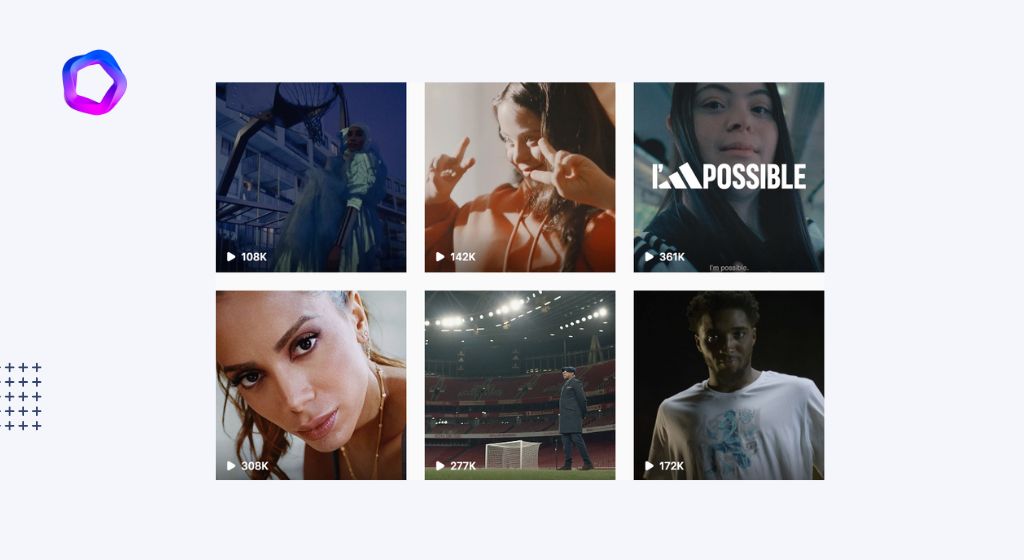
When it comes to social media, video is king.
Video is booming in the social space. According to a report by HubSpot, 54% of marketers say that video is the most valuable content type for achieving social goals, and for good reason.
Social media users are spending more time watching videos than ever before. And it’s not just on Facebook or Instagram—users are watching videos on TikTok and Instagram Reels, too.
This is because long-form and short-form productions continue to dominate social platforms across all platforms due to their high engagement rate. These videos can be as simple as a quick Vine or as complex as a multi-episode series or documentary.
Plus, thanks to advancements in DIY and remote video production, you don’t need a massive budget to produce a quality video. All you need is a laptop or smartphone and some tricks of the trade!
Posts that show off your human side
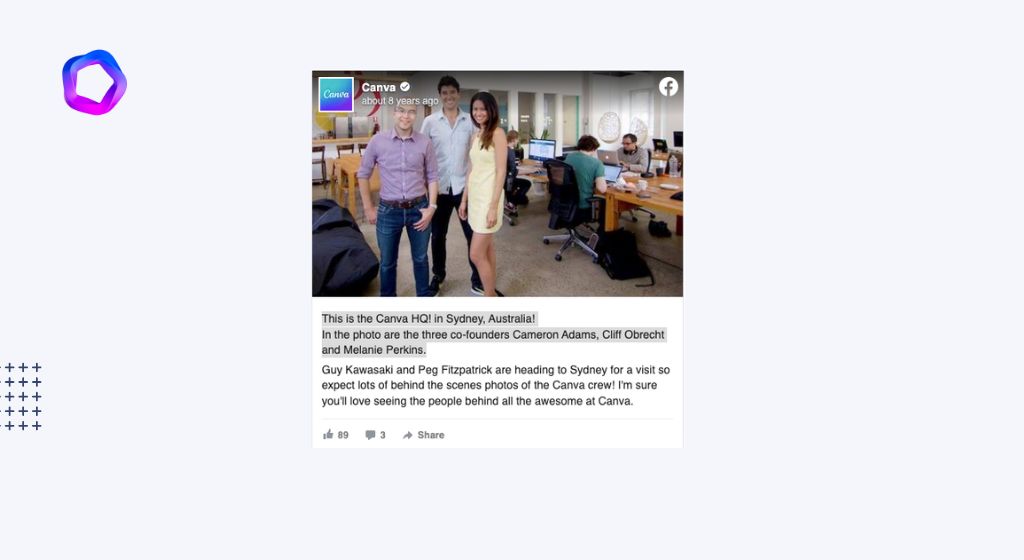
It’s time to show your humanity.
As we (eventually) come out of COVID-19, the social media marketing strategy that you’ve been using will no longer be as effective—but you can still use it to your adventage.
In particular, personal and personable content should be a cornerstone of your social media marketing strategy. Don’t be afraid to remind followers of the humans behind your posts.
Make your social presence as timely as possible
Punctuality is a major challenge for marketers these days. In addition to posting fresh content on a regular basis, you are expected to be always “on” with your followers.
However, customers cannot always expect to work with your watch. Punctuality is a major challenge if you are short on resources or if you are part of a small team.
Here are some ideas on how to maximize the schedule and time you spend on social media.
Post at the best times to engage
There are some great tools you can use to make sure your customers are online, but they are as good as your ability to communicate with them. If your team doesn’t have a social media manager or community manager, it’s hard to be there when you need it most. For example, you may see the recommended posting time late in the evening. But if your team isn’t there to communicate, what’s the point of posting at a “favorable” time?
Make sure social media or community managers are available instead and willing to answer product questions and concerns when tweeting or posting. Take the time to find out the best time to post on social media. However, it is just as important to participate after posting.
Respond to your customer questions and shout-outs ASAP
In today’s world, customers expect you to be available. In fact, 47% of consumers say that strong customer service creates a great brand on social media.
Efforts are needed to ensure that conversation and engagement opportunities are not left unattended. That’s why social customer care is so important to brands that want to raise their audience awareness. The word of excellent service spreads quickly. Whether using compliments or answering questions, companies should not disappoint their customers.
